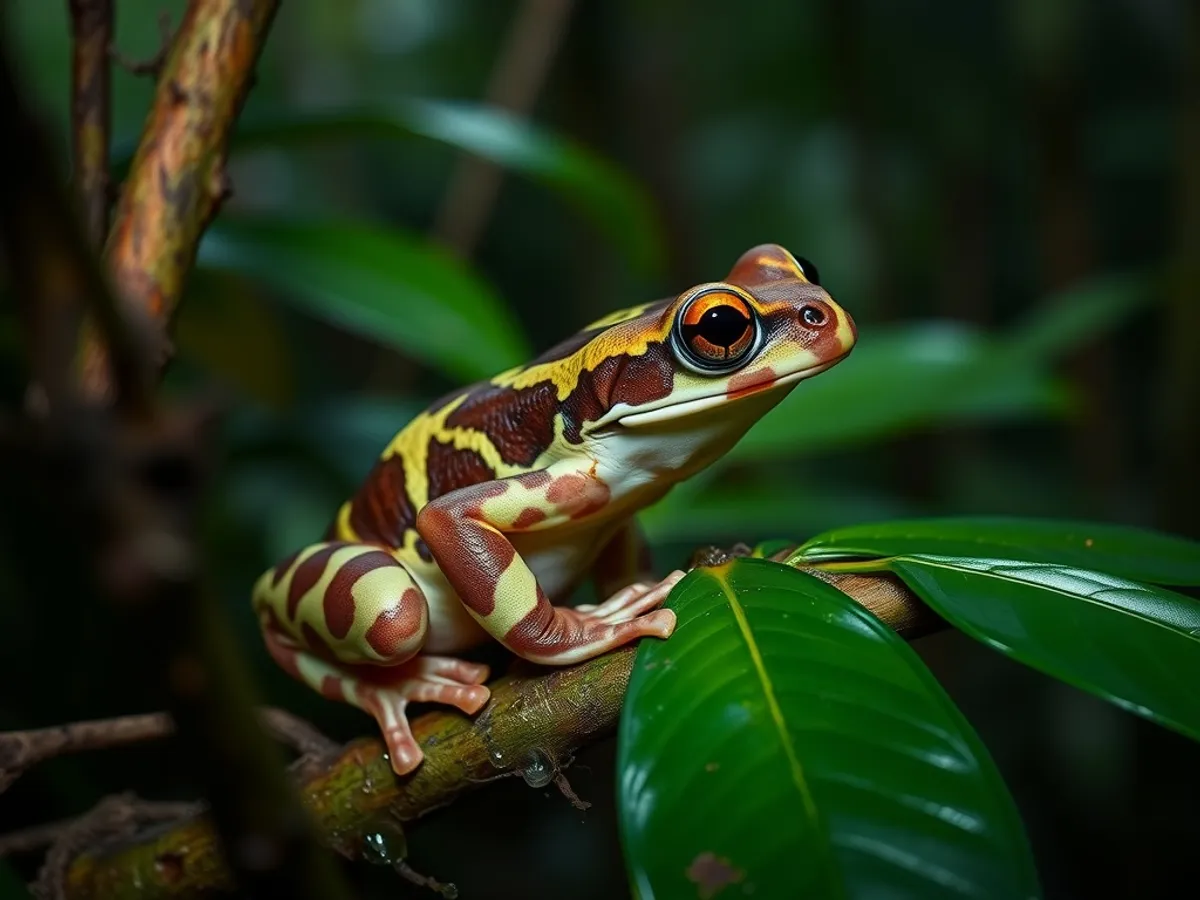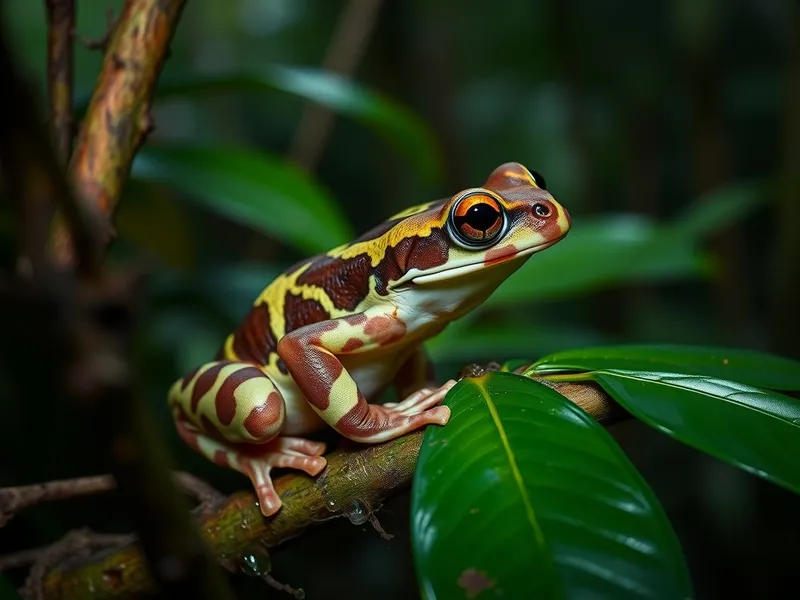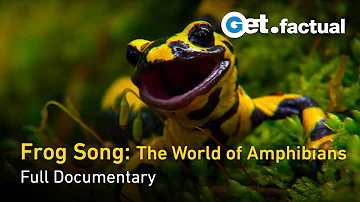
Marbled Tree Frog
Dendropsophus marmoratus

Meet the Marbled Tree Frog
The Marbled Tree Frog is a small, nocturnal amphibian known for its striking marbled pattern of green, brown, and cream on its back, which provides excellent camouflage among leaves and tree bark. This species is native to the lowland tropical forests of South America, particularly in the Amazon Basin. It is an arboreal frog, spending most of its time perched on vegetation near slow-moving or stagnant water bodies where it breeds. The Marbled Tree Frog has a distinctive, high-pitched call used during the rainy season to attract mates. Its adaptability to different types of forested habitats has helped it remain common throughout its range.
Classification
Amphibian
Habitat
Tropical rainforest and flooded lowland forest
Diet
Carnivore
Lifespan
3-6 years
Conservation
Least Concern
Weight
2-6 grams
📖Fascinating Facts
Arboreal Lifestyle
The Marbled Tree Frog spends most of its life in trees and shrubs, only descending to water to breed.
Camouflage Expert
Its marbled coloration allows it to blend seamlessly with mossy and lichen-covered tree bark, providing excellent protection from predators.
Distinctive Calls
Males produce a loud, high-pitched call during the rainy season to attract females and establish territory.
📋Detailed Description
The Marbled Tree Frog (Dendropsophus marmoratus) is a small, slender-bodied amphibian, typically measuring 28–40 mm in snout-vent length, with females generally larger than males. Its dorsal surface exhibits a striking marbled pattern of olive green, brown, and cream, which provides exceptional camouflage among foliage and tree bark. The skin is smooth, and the ventral side is pale and unmarked. This species possesses large, forward-facing eyes with horizontal pupils, enhancing night vision for its nocturnal lifestyle. Expanded toe pads and partially webbed fingers and toes allow for agile climbing and adherence to smooth surfaces, an adaptation to its arboreal existence. Dendropsophus marmoratus is primarily active during the humid, rainy season, when it descends from the canopy to breed in temporary pools and flooded forest floors. Its call is a rapid, high-pitched trill, produced by males from elevated perches to attract females and establish territories. The species is solitary outside the breeding season, with individuals dispersing widely throughout the forest canopy. Its diet consists mainly of small arthropods, including insects and spiders, which it captures using a rapid flick of its sticky tongue. The Marbled Tree Frog's adaptability to both pristine and disturbed habitats, as well as its tolerance for seasonal flooding, have contributed to its widespread distribution and stable populations throughout the Amazon Basin.
💡 Did you know?
Unlike many frogs, the Marbled Tree Frog can tolerate temporary pools and flooded areas, making it especially resilient during the rainy season.
🔬Research & Sources
🎭Behavior & Social Structure
Dendropsophus marmoratus is primarily nocturnal, emerging at dusk to forage and call. During the day, it remains hidden among leaves or in tree crevices to avoid desiccation and predation. Its hunting strategy is sit-and-wait, relying on camouflage and quick reflexes to ambush prey. The species is generally solitary, except during the breeding season when males congregate in loose choruses near water bodies. Territorial disputes are resolved through vocalizations and occasional physical displays, but aggression is minimal. The frog is highly arboreal, rarely descending to the ground except for breeding. It exhibits a strong homing instinct, often returning to the same calling or breeding sites each season.
👶Reproduction & Life Cycle
Breeding occurs during the rainy season, typically from November to April, when temporary pools and flooded areas are abundant. Males call from vegetation 0.5–2 meters above water to attract females. Amplexus is axillary, and females lay clutches of 200–600 eggs on submerged or emergent vegetation. The eggs hatch within 24–48 hours, depending on temperature and humidity. Tadpoles are aquatic, feeding on detritus and algae, and undergo metamorphosis in 4–8 weeks. There is no parental care after egg deposition. The rapid development of larvae is an adaptation to the ephemeral nature of breeding sites, which may dry up quickly.
🛡️Adaptations & Survival
Key adaptations include cryptic coloration for camouflage, expanded toe pads for climbing, and a highly permeable skin that facilitates cutaneous respiration in humid environments. The species' reproductive strategy—laying eggs in temporary pools—reduces predation risk from aquatic predators. Its ability to exploit both primary and secondary forests, as well as human-modified landscapes, demonstrates ecological flexibility. The Marbled Tree Frog's vocal repertoire is finely tuned to minimize overlap with sympatric species, enhancing reproductive success.
📚Research Sources
🎨Cultural Significance
There is limited direct cultural significance for Dendropsophus marmoratus in indigenous or local traditions. However, frogs in general are often regarded as indicators of environmental health in Amazonian folklore and are sometimes featured in myths as symbols of rain and fertility. The species contributes to local ecosystem services by controlling insect populations and serving as prey for a variety of predators.
🔬Recent Research & Discoveries
Recent molecular phylogenetic studies have clarified the taxonomy of the Dendropsophus genus, revealing cryptic diversity and potential undescribed species within the group. Acoustic analyses have documented the species' call structure and its role in reproductive isolation. Ongoing research is investigating the effects of habitat fragmentation on genetic diversity and population connectivity. Studies on the species' tolerance to environmental pollutants are also underway, given increasing anthropogenic pressures in the Amazon Basin.
🎥Wildlife Videos

Frog Song: The World of Amphibians - Full Documentary
Amphibians are living fossils in a modern world. The various species of frogs, toads, and salamanders are more diverse than you ...
Get.factual

Best Of Frogs | Top 5 | BBC Earth
Welcome to BBC EARTH! The world is an amazing place full of stories, beauty and natural wonder. Here you'll find 50 years worth ...
BBC Earth

The Secrets Of The Frog | Our World
Most people perceive frogs as cold, wet, slimy, ugly creatures that give us warts on the slightest contact. The closer we look at ...
Our World

Explore the Fascinating World of Frogs in This 4K UHD Video with Relaxing Music
Get lost in the beauty and wonder of the natural world with this 4K UHD frog video and relaxing music. From the delicate chirps of ...
Relaxing Music Source

The Purple Frog & Friends: Nature’s Hidden Treasures | Full Documentary
Secret Life Of Frogs In the land of tigers and elephants, deep in the jungles of India, a handful of scientists are at work, trying to ...
Wild Life Documentary

Frogs - The Thin Green Line (Documentary Full Length)
TheAnimalArea
🌍Habitat Information
The Marbled Tree Frog typically inhabits Tropical rainforest and flooded lowland forest environments. Marbled Tree Frogs have adapted to their environments with specialized features and behaviors.
Primary Habitat:
Tropical rainforest and flooded lowland forest
More detailed habitat information will be available soon.
🛡️Conservation Status
The Marbled Tree Frog is currently classified as Least Concern. Conservation efforts are crucial for preserving this species for future generations.
Common Threats:
- 🏠Habitat loss and fragmentation
- 🌡️Climate change impacts
- 🎯Hunting and poaching
- 🏭Human-wildlife conflict
⚠️Threats & Conservation Challenges
Currently classified as Least Concern by the IUCN, Dendropsophus marmoratus faces localized threats from habitat loss due to deforestation, agricultural expansion, and pollution. However, its broad range and adaptability mitigate large-scale population declines. Climate change, which may alter rainfall patterns and the availability of breeding sites, poses a potential long-term threat. The species is not targeted by the pet trade and is not known to be susceptible to chytridiomycosis at significant levels, unlike some other amphibians in the region.
🔬Scientific Classification
Scientific Name
Dendropsophus marmoratus
Classification Hierarchy
🔍 About Taxonomic Classification
Taxonomic classification is a hierarchical system used by scientists to classify and organize living organisms based on shared characteristics and evolutionary relationships.
The system moves from broad categories (Kingdom) to increasingly specific ones, with each animal's scientific name typically consisting of its Genus and species.
📝Community Notes
Share your observations and insights about the Marbled Tree Frog with our community of wildlife enthusiasts.
Join Our Community
Sign in to share your observations and connect with fellow wildlife enthusiasts.
Sign In to ContributeNo community notes yet
Be the first to share your observations about the Marbled Tree Frog!
Explore Marbled Tree Frog
Select a tab above to learn more about this amazing animal.
📸Photo Gallery
No photos available for this animal yet.
🌟Discover More Wildlife
Continue your journey of discovery with more fascinating animals from our database
